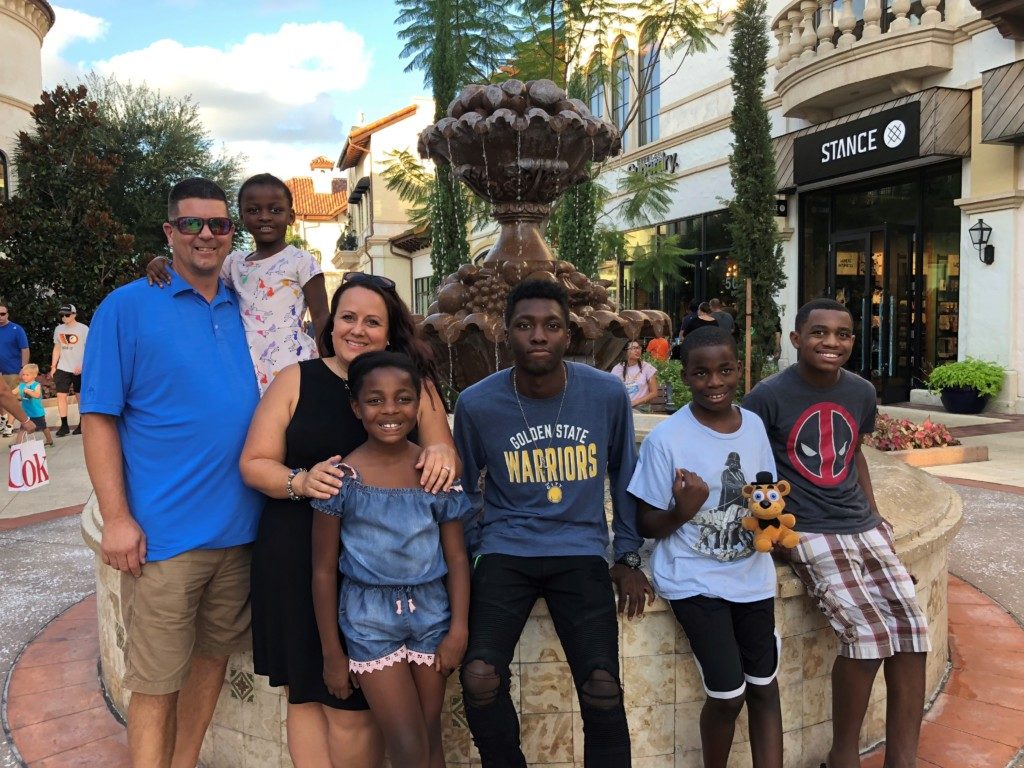
Today is back-to-school day for most school districts in Florida. But for the Plucinski family of Central Florida, it’s back to schools. And not just district schools.
Sisters Cora and Zuri will board a school bus to start the day at a district elementary school, while mom Corin Plucinski will drive brothers Zach and Nathan 30 minutes to a private school. They attend with help from one of Florida’s multiple educational choice scholarships.
In many parts of the country, this may be unusual. But in Florida, which offers one of the robust arrays of school choice in the country, it’s increasingly common. Growing numbers of families have different children attending different schools in different educational sectors.
To the Plucinskis, whose oldest is now headed to college after graduating from a district high school, there’s nothing odd about it.
“When you’ve got five kids you’re always juggling something anyway,” Corin Plucinski said.
Thirty years ago, roughly 90 percent of Florida students in preK-12 attended assigned district schools, and about 10 percent attended private schools. Beyond a handful of magnet schools, there was no state-supported school choice.
Fast forward a generation. Today, 46 percent of Florida students – 1.7 million – attend something other than their assigned district schools. About 300,000 attend charter schools. Another 300,000 attend private schools. Most of the rest attend options created by school districts, from magnet schools and career academies to IB and dual enrollment programs.
This flourishing landscape gives parents more opportunities to find the right fit for their kids. And for many families, that means one child in this sector, another in that sector.
Originally from Milwaukee, Wisconsin, Corin and her husband Mark knew they wanted a big family. When they discovered they couldn’t have children of their own, they turned to the foster care system. Soon they welcomed siblings Cora, Zuri, Zach and Nathan into their home. Not long after, Leonte joined the family as the new big brother.
The Plucinskis moved to Florida two years ago, in part to escape Milwaukee winters and to start fresh as a family. They were pleasantly surprised by what they discovered.
As a multi-racial family, the Plucisnkis felt Milwaukee was far too segregated. People talked. Others stared and judged. In the Orlando area, there was none of that.
“It’s more racially diverse here,” Corin said of her new neighborhood in east Orlando. Even her kids were shocked by the diversity. Florida wasn’t just black and white like Milwaukee, it was multi-colored. The warm weather, lush palm trees and nearby beaches didn’t hurt either.
They also discovered something else. Florida’s public schools, in their view, were better. Way better.
“Moving to Florida has been a world of change,” said Corin about Florida’s K-12 education system.
Florida public schools had smaller classes, which allowed Zuri (now in third grade) and Leonte to get the extra help they needed. She also felt her kids were being held to a higher standard.
Leonte struggled with the higher expectations at first, but his new public school teachers provided extra help to raise his scores on the state standardized test and the SAT. He finished his senior year at East River High School in Orlando with his GPA comfortably above 3.0. Leonte will be a freshman at Seminole State College this year and wants to become a fireman when he graduates.
Zuri loves her public school, East Lake Elementary, and is excited to welcome her little sister Cora to the kindergarten class.
Meanwhile, Zachary (7th grade) and Nathan (5th grade), will both attend The Arbor School in Winter Springs, a private school for children with special needs. Both have multiple learning disabilities, and both use the Gardiner Scholarship, an education savings account for students with special needs. (The program is administered by Step Up For Students, which hosts this blog.)
Zachary and Nathan weren’t always private school students. They’ve tried public school, home education and Florida Virtual School too.
For Zachary, a district elementary school worked better in Florida than in Milwaukee. In Wisconsin, he struggled so much in his public school that he was home schooled by his adoptive mom instead. But in Florida, he was able to flourish thanks to smaller class sizes and teachers that his parents said put in extra effort.
Middle school was a different story, however. The school was just too big and held too many distractions. Zachary’s grades began to suffer. That’s when Plucinski turned to the Gardiner Scholarship.
Zachary’s grades dramatically improved at The Arbor School, from D’s and F’s to A’s and B’s.
Until this year, Nathan had only been home schooled. He needed occupational, physical, speech and behavioral therapy, all of which made attending a traditional school difficult.
This year will be Nathan’s first at The Arbor School with his big brother. He’s already made friends at the school and Plucinski believes the option will be a great fit for him.
Public or private? It doesn’t matter to the Plucinskis.
“We’re just happier,” Corin Plucinski said. “This is how schools are supposed to be.”



Could you please post the amount middle school received. From Step Up.